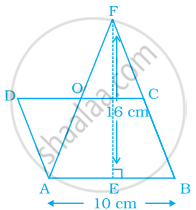Advertisements
Advertisements
प्रश्न
A parallelogram has sides of 15 cm and 12 cm; if the distance between the 15 cm sides is 6 cm; find the distance between 12 cm sides.
उत्तर
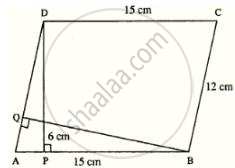
Base, AB = 15 cm
Distance between 15 cm sides
i.e. height DP = 6 cm
∴ Area of ||gm = Base × height
= AB × DP
= 15 × 6 = 90 cm2
Let BQ be the distance between 12 cm sides
∴ AD × BQ = area of ||gm ABCD
∴ 12 × BQ = 90
BQ = `90/12`
BQ = `15/2 = 7.5` cm
APPEARS IN
संबंधित प्रश्न
PQRS is a parallelogram (see the given figure). QM is the height from Q to SR and QN is the height from Q to PS. If SR = 12 cm and QM = 7.6 cm. Find:
- the area of the parallelogram PQRS
- QN, if PS = 8 cm

The adjacent sides of a parallelogram are 21 cm and 28 cm. If it's one diagonal is 35 cm; find the area of the parallelogram.
The base of the parallelogram with area is 52 sq.cm and height 4 cm is
The area of the parallelogram ABCD is 1470 sq.cm. If AB = 49 cm and AD = 35 cm then, find the height, DF and BE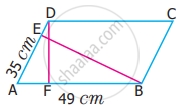
Find the height of the parallelogram whose base is four times the height and whose area is 576 sq.cm
Area of parallelogram ABCD (see the figure) is not equal to ______.
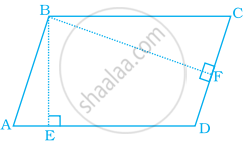
Ratio of area of ∆MNO to the area of parallelogram MNOP in the same figure is ______.
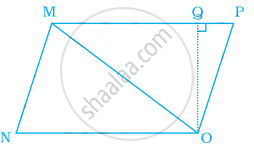
To find area, any side of a parallelogram can be chosen as ______ of the parallelogram.
If perimeter of two parallelograms are equal, then their areas are also equal.
In the given figure, area of ∆AFB is equal to the area of parallelogram ABCD. If altitude EF is 16 cm long, find the altitude of the parallelogram to the base AB of length 10 cm. What is the area of ∆DAO, where O is the midpoint of DC?
